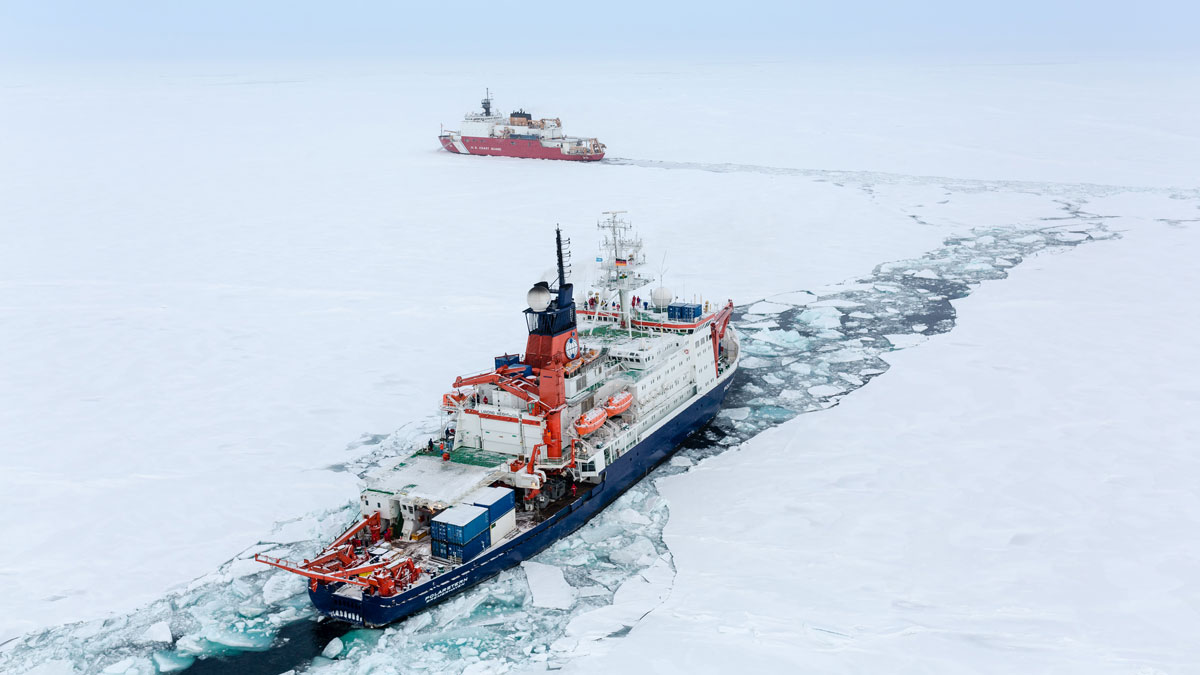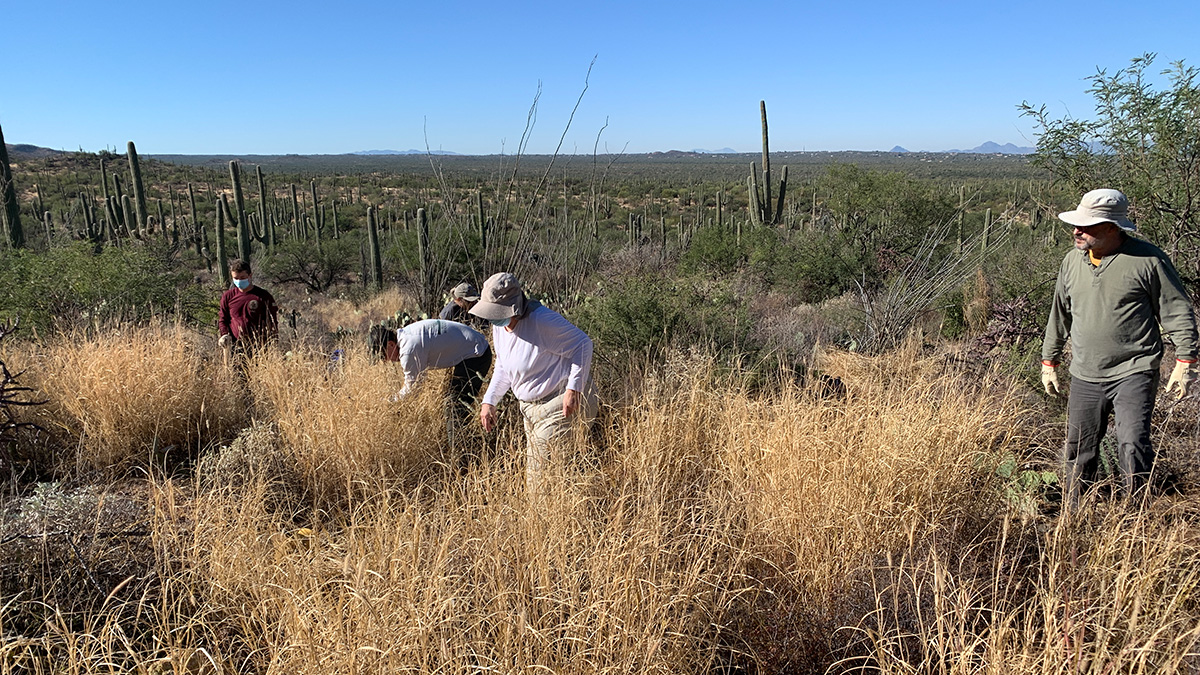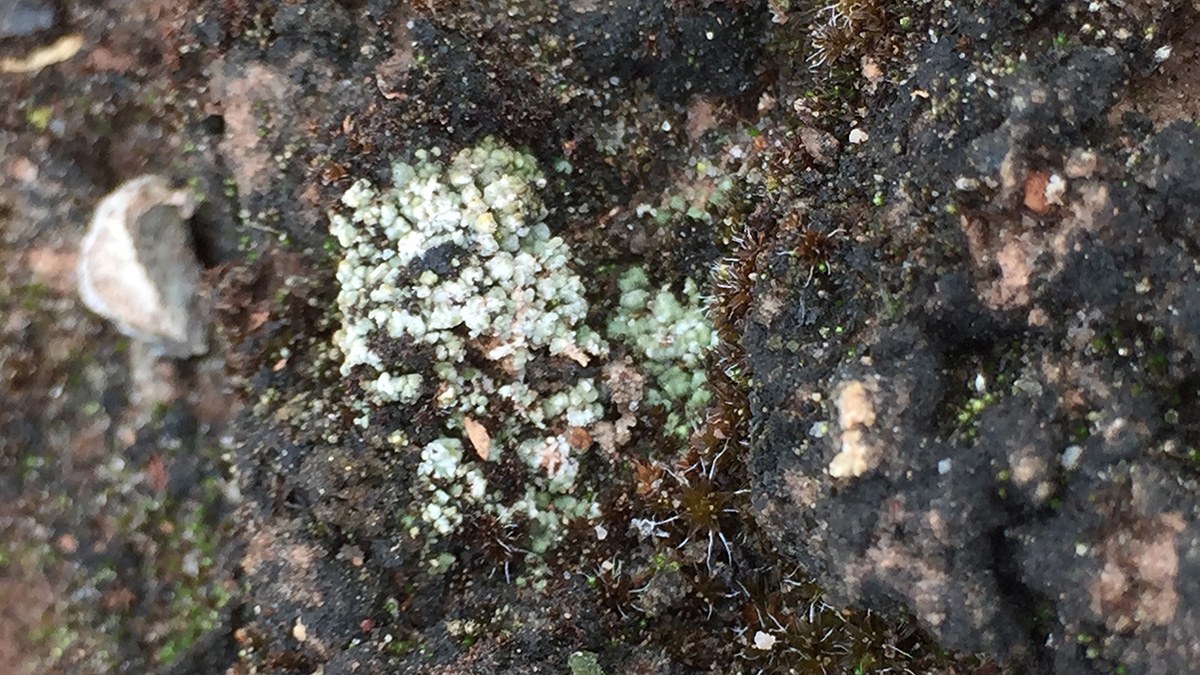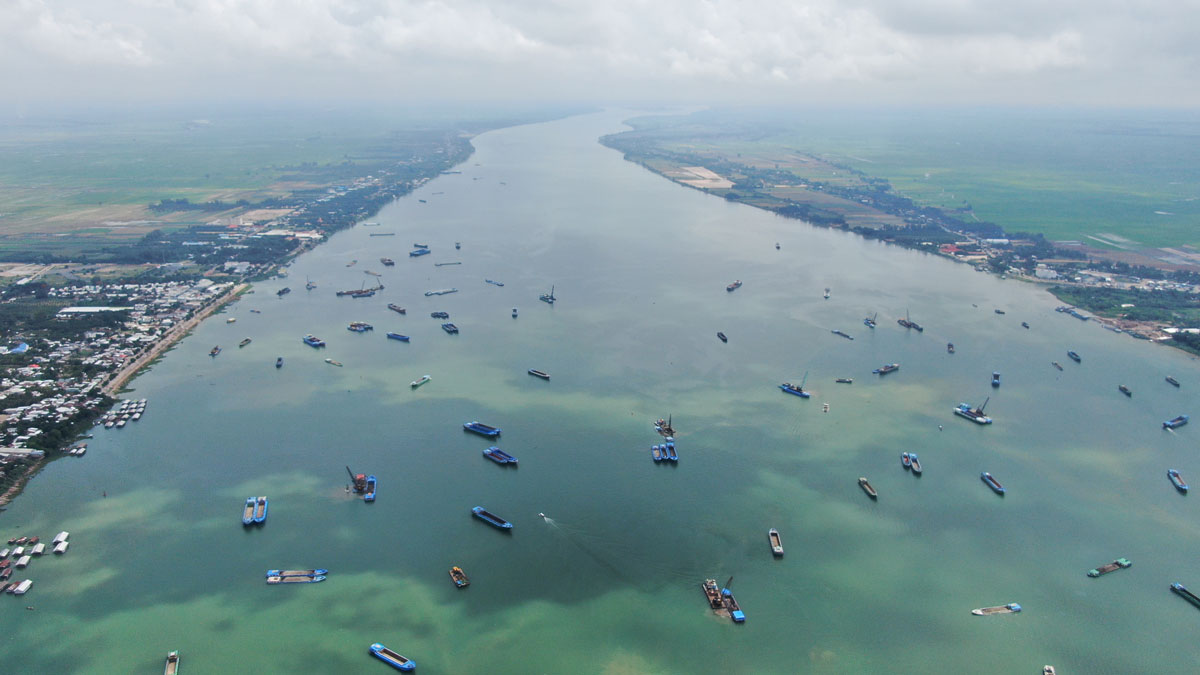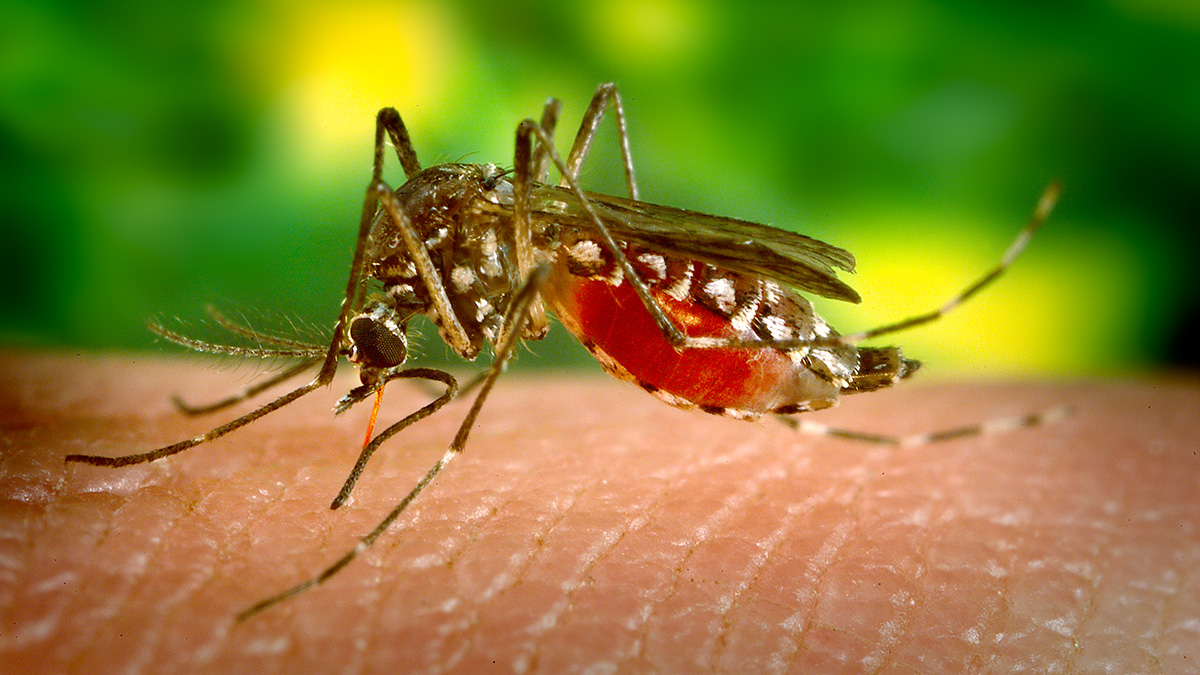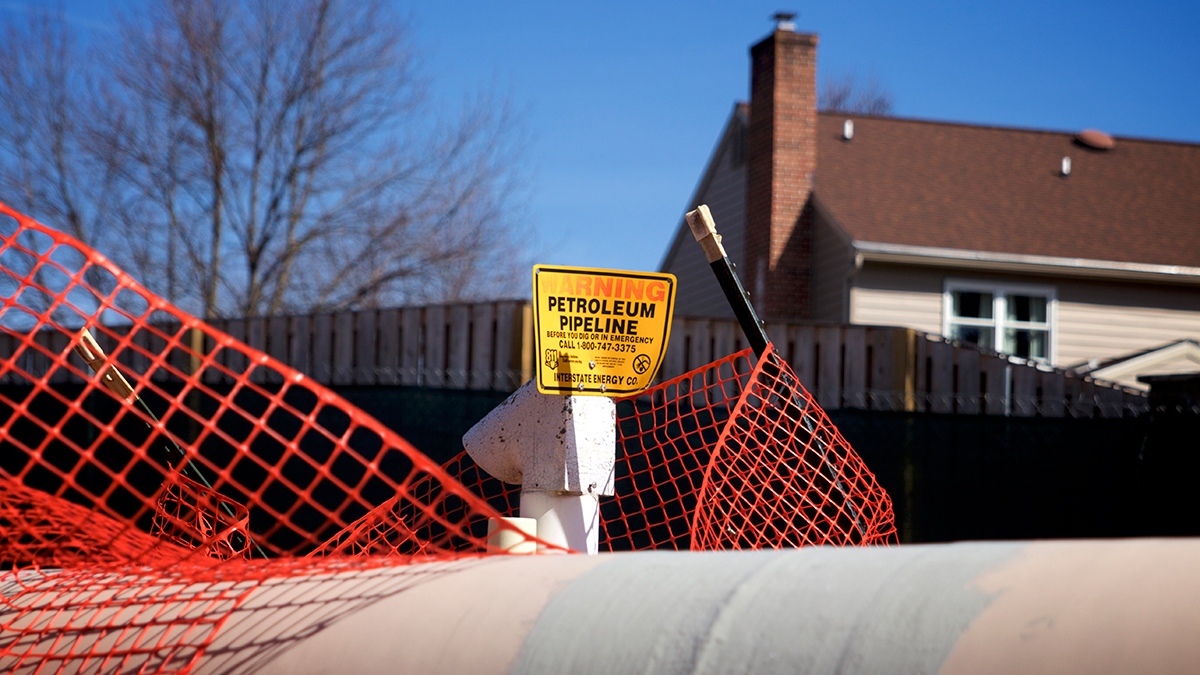Scientists have long assumed that dust storms lead to infections with the desert soil fungus Coccidioides, but new evidence suggests otherwise.
Health & Ecosystems
Diurnal Oxidation for Manganese Minerals in the Arctic Ocean
The relative abundance of different oxidation states for this important micronutrient varies on the basis of how much available sunlight there is.
Invasive Plants and Climate Change Will Alter Desert Landscapes
In experiments conducted in Biosphere 2, invasive buffelgrass weathers higher temperatures and drought conditions better than its native brethren.
Drop in Rain Forest Productivity Could Speed Future Climate Change
As temperatures rise, tropical forests will become more stressed and photosynthesize less.
Biocrust “Probiotics” Can Aid Dryland Restoration Efforts
Bacteria can speed up the growth of biocrust-forming organisms in nurseries, providing more material for restoration of degraded dryland soil.
Health Impacts of Air Pollution from Australian Megafires
Models suggest that thousands of Australians experienced dangerous levels of air pollution for several months, leading to more than a hundred deaths.
Satellites Spy on Sand Mining in the Mekong
Concrete, used in everything from streets to skyscrapers, needs sand, often mined from active rivers in developing countries with little oversight. Researchers can now use satellites to keep watch.
A Gas Pipeline Investigation Built on Community-Centered Ideas
From developing a research question to enacting solutions, environmental justice requires community engagement in every step of the scientific process.
Settlement of Rapa Nui May Have Been Doomed by a Dearth of Dust
Rapa Nui and Hawai‘i offer a tale of two island settlements: Hawai‘i was close enough to Asia for continental dust to help replenish soil nutrients depleted by agriculture. Rapa Nui wasn’t.


